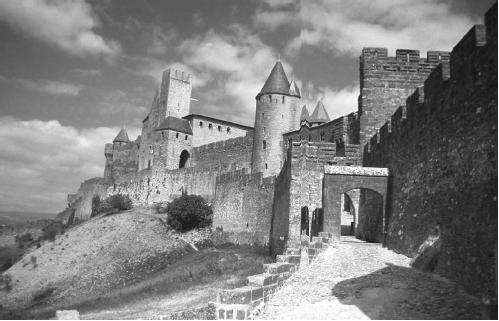Christian Mystery Schools, Cults, Heresies
Cathars
In 1208, Pope Innocent III (c. 1161–1216) declared the Cathars, a sect of Christianity (also known as the Albigenses), to be heretical and condemned the citizens of Beziers, Perpignan, Narbonne, Toulouse, and Carcassone to death as "enemies of the Church." Simon de Montfort (c. 1165–1218), an accomplished military leader, was appointed to conduct a crusade against fellow Christians, cultured men and women of what is today southern France, who the pope had deemed a greater threat to Christianity than the Islamic warriors who had pummeled the Crusaders. Although it took him nearly 20 years of warfare against the beleaguered Albigenses, de Montfort managed to exterminate 100,000 men, women, and children, before he himself was killed during the siege of Toulouse in June 1218.
According to many contemporary scholars, the Cathars' or Albigenses' real offense, their "heresy," was their opposition to the sacramental materialism of the medieval church. The group had no fixed, religious doctrine, and was known by various names. They called themselves the True Church of God, and most of the few manuscripts that survived the flames of siege were all written in Provencal,

Most experts on this historical period agree that the nearly 40 years of warfare against the Cathars ruined the most civilized nation in thirteenth-century Europe. The pitiless cruelty and brutal licentiousness, which was habitual among the Crusaders, achieved new depths of inhumanity against the Albigenses. No man was spared in their wrath. No woman was spared their violence. It has been observed that no Roman, Hunnish, Muslim, or Mongol conqueror ever annihilated a Christian community with greater savagery.
Since most of the Albigensian communities were first sacked, then burned, their records and their libraries were destroyed. Because the testimony of exactly what the Cathars really believed was wrung out under extreme pain from those who survived the massacres and endless sieges long enough to be tortured and burned at the stake, it has been difficult to gain access to their true belief structure until recent times. Research now indicates that far from the devil-worshipping heretics that Pope Innocent III decreed warranted extermination, the Albigenses were devout, chaste, tolerant Christian humanists, who loathed the material excesses of the medieval church. They were metaphysicians, spiritual alchemists, herbalists, healers, and social activists with a pragmatic turn of mind. Similiar expressions of their belief concepts may be found in the Gnostic Gospels, in the Essenic teachings discovered at Qumran, and in the Egyptian mystery schools.
It would appear that the greatest heresy to the Christian Church lay in the Cathars' denial that Christ ever lived as a man, but was a being of spirit, much like an angel. They also believed that it was Satan who created the material world after his expulsion from heaven when God the Father, taking pity on his once bright star Lucifer, allowed him seven days to see what he might create. The bodies of Adam and Eve were animated by fallen angels and directed by Satan to beget children who would follow the ways of the serpent. To counter the lust of the flesh inspired by the devil, the Cathars preached abstinence before marriage, chastity, vegetarianism, and nonviolence. They believed in a progressive doctrine of reincarnation with the spirits of animals evolving into humans. In their view, it was a dualistic universe, with good and evil having equal strength, and they considered their time in the world as a struggle to resist Satan's power.
In 1244 Montsegur, the last center of Albigensian resistance, fell, and hundreds of Cathars were burned at the stake. The headquarters of the Inquisition was now established in the once highly cultured Albigensian city of Toulouse, and the few Cathars who had managed to escape death during the bloody decades of the crusade that had been launched against them were now at the mercy of the relentless witch and heretic hunters.

Comment about this article, ask questions, or add new information about this topic: